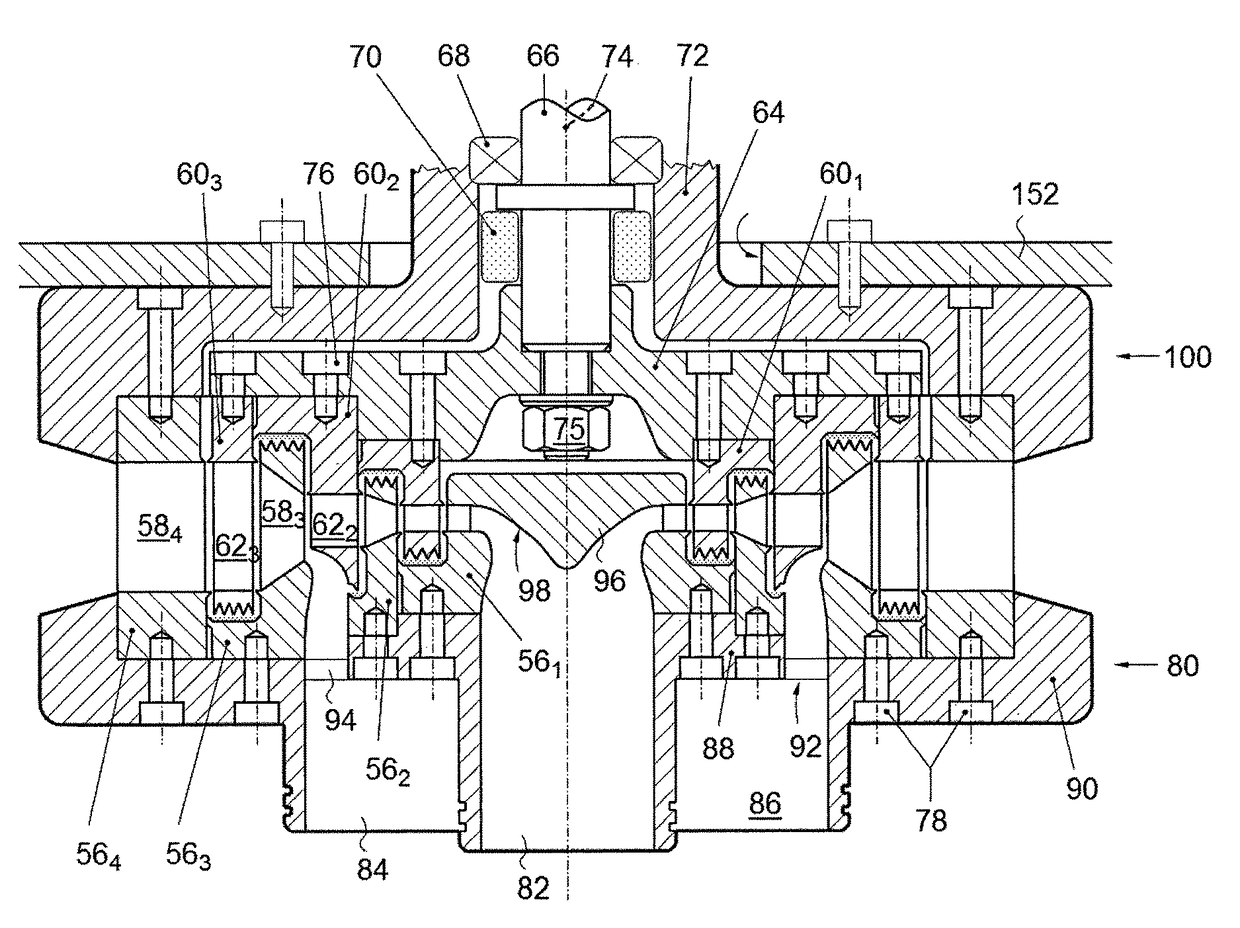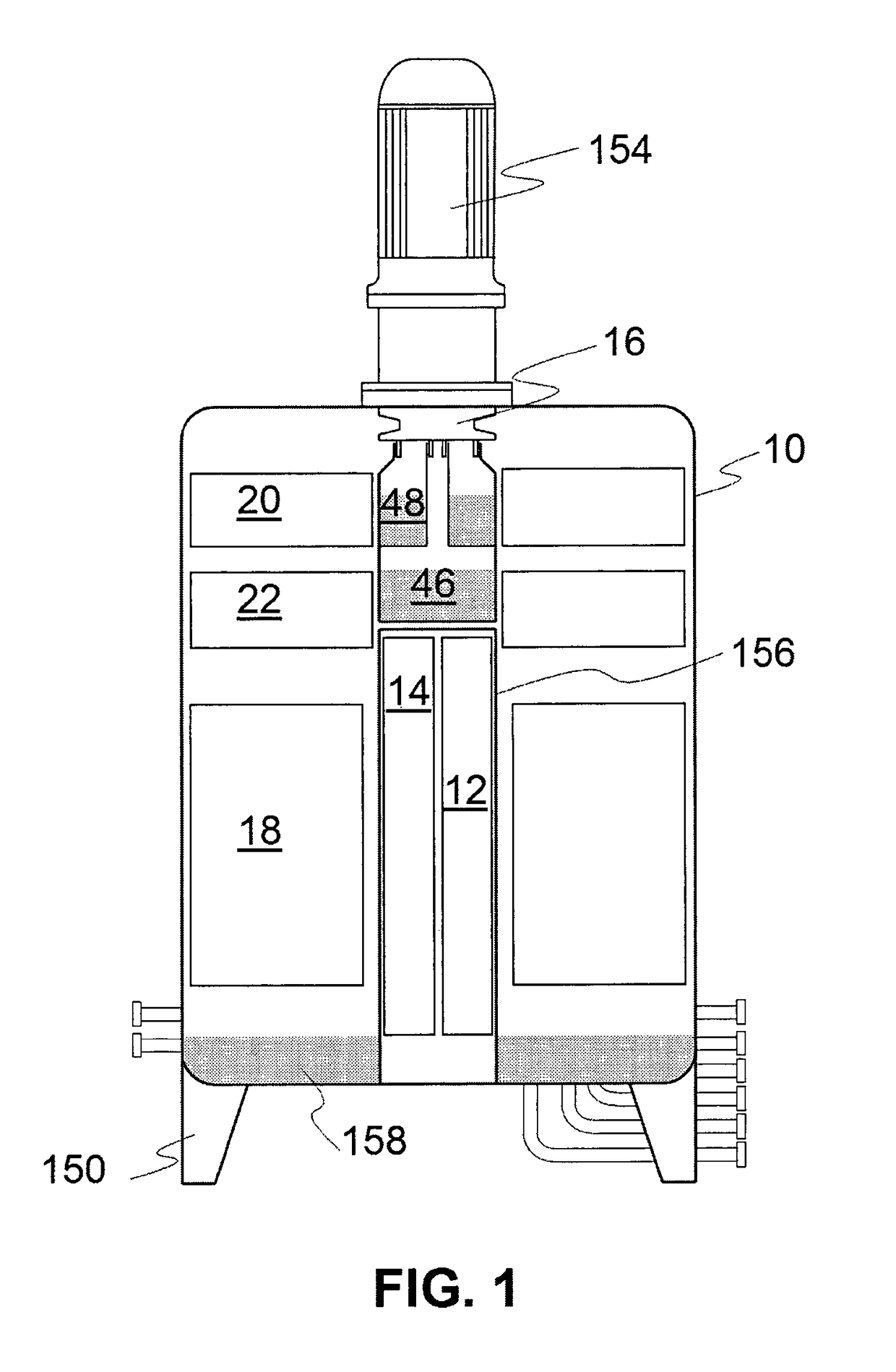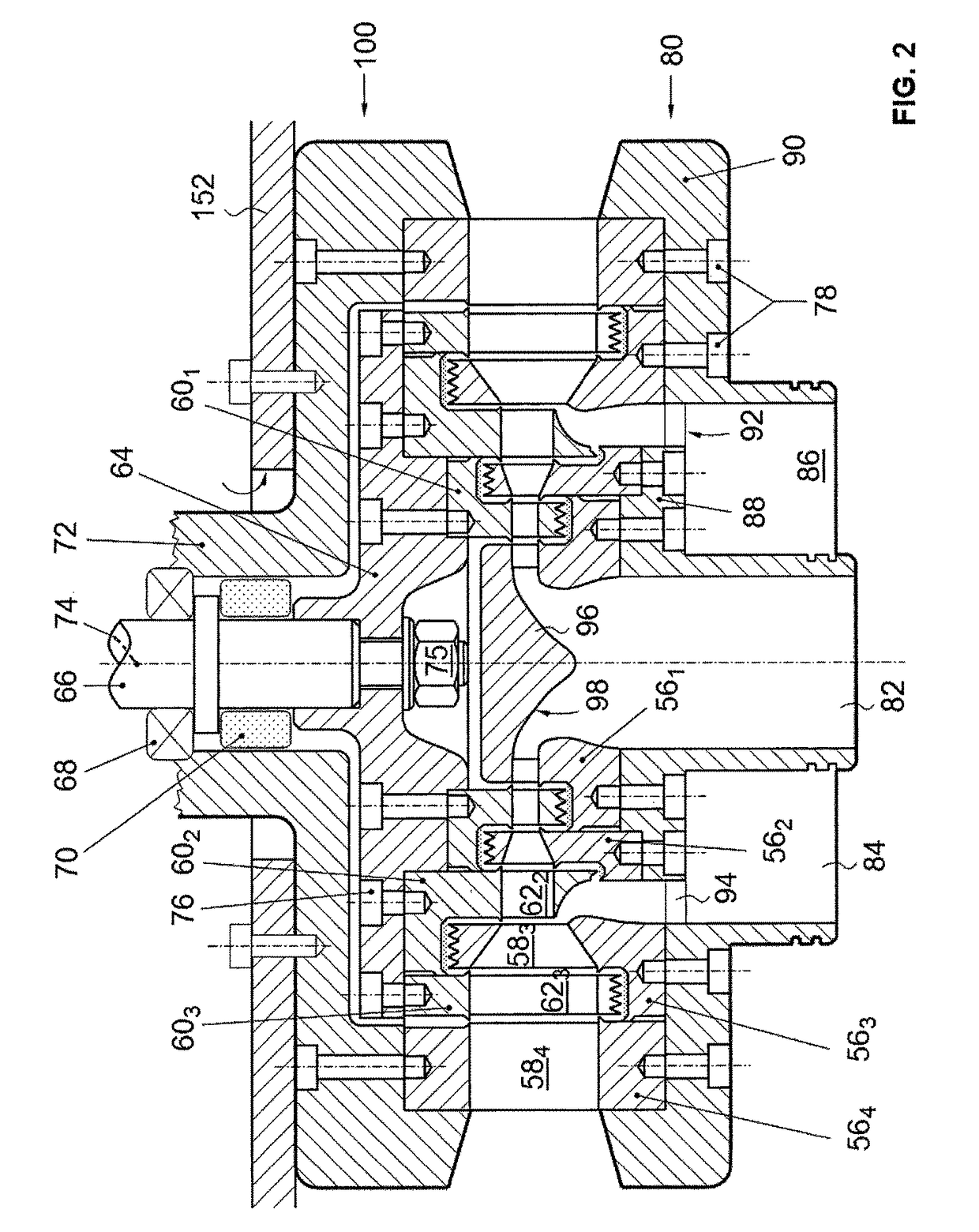Turbine
a turbine and turbine technology, applied in the field of turbines, can solve the problems of not much higher manufacturing cost of induction-type turbines, and achieve the effects of reducing pressure losses, increasing efficiency of rankine cycle, and compact structur
- Summary
- Abstract
- Description
- Claims
- Application Information
AI Technical Summary
Benefits of technology
Problems solved by technology
Method used
Image
Examples
Embodiment Construction
[0031]It will be understood that the following description and the drawings to which it refers describe by way of example preferred embodiments of the claimed subject matter for illustration purposes. The description and drawings shall not further limit the scope, nature or spirit of the claimed subject matter.
[0032]FIG. 2 is a schematic cross-section through a turbine 16 in accordance with the present invention. It will first be noted that the turbine 16 is a multi-stage (here a three-stage) outward-flow radial type turbine, i.e. the vapour axially enters into the turbine 16 and then flows in a radial direction outward through the different stages of the turbine 16, which are substantially concentric. The turbine is furthermore of the induction type, i.e. a secondary flow of low pressure vapour is induced at a low pressure stage into the turbine 16. Finally, the turbine is of the impulse type, i.e. the vapour is mainly expanded as it passes through the stator of the turbine 16.
[003...
PUM
 Login to View More
Login to View More Abstract
Description
Claims
Application Information
 Login to View More
Login to View More - R&D
- Intellectual Property
- Life Sciences
- Materials
- Tech Scout
- Unparalleled Data Quality
- Higher Quality Content
- 60% Fewer Hallucinations
Browse by: Latest US Patents, China's latest patents, Technical Efficacy Thesaurus, Application Domain, Technology Topic, Popular Technical Reports.
© 2025 PatSnap. All rights reserved.Legal|Privacy policy|Modern Slavery Act Transparency Statement|Sitemap|About US| Contact US: help@patsnap.com



